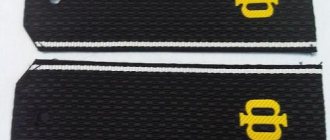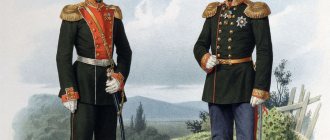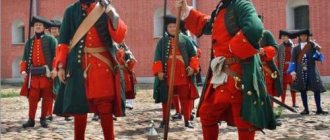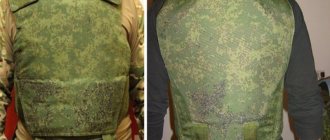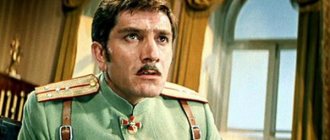Historical reference
According to some sources, the rank of ensign was awarded to standard bearers by decree of Tsar Alexei Mikhailovich in 1649. Standard bearers were chosen from the most physically prepared warriors. They had courage, tested by real military exploits. The title itself comes from the word “Papor”, which means “Banner”. That is why the data provided is considered reliable.
The status that a military man received with the rank of ensign made him higher than a corporal, but he did not exceed a lieutenant, that is, an ensign is a kind of middle rank. The first transformations occurred in 1680, when, by Decree of Fyodor Alekseevich Romanov, the rank of ensign took on an intermediate meaning between sub-ensign and lieutenant. At the same time, the corresponding rank was introduced into all regiments, including the Streltsy.
Peter I, with the famous Table of Ranks, tried to abolish the rank of ensign, replacing it with “Fendrik,” but the attempt was unsuccessful.
As a result, the rank was first abolished for artillerymen and members of the pioneer troops. Then a rank was officially introduced, meaning belonging to the chief officer corps (for infantry and cavalry). Holders of the title “Ensign of the Guard” automatically received the title “Your Honor.”
On January 1, 1827, the insignia for warrant officers was established; it was a star on the chief officer's epaulette. The next reform was carried out in 1884. Since that time, warrant officer has been an optional rank, and since 1886, a provision was introduced that military personnel could hold this rank only when conducting combat operations. In peacetime, they are required to be transferred to second lieutenants or could be dismissed from service.
During the outbreak of the First World War, there was another surge in the promotion of military personnel to warrant officers. This is explained by the need to replenish the senior officer corps. Ensigns were trained in special schools, but accelerated transfer programs were also observed. In 1907, the status of warrant officers changed somewhat. The introduction of the rank of ordinary ensign placed the rank of ensign in a position above the ordinary ensign, but below the second lieutenant.
Find out: What shoulder straps do lieutenants wear in the army and government agencies of Russia
Since 1917, there has not been such a rank in the Red Army. It was reintroduced into the Soviet army only in 1972. The ensign was considered an assistant to a junior officer and a superior to a soldier. The rank status placed warrant officer above petty officer but below junior lieutenant, but from 1981 the rank of "Senior Warrant Officer" was introduced. In 2009, again all warrant officers were laid off. It was planned that their place would be taken by sergeants, but with new reforms undertaken by S. Shoigu in 2013, the rank of warrant officer was restored again.
Distinguishing marks
Dealing with the appearance of shoulder straps even for a serviceman of the same rank is not so easy. The fact is that the order of the Ministry of Defense established several types of clothing. In accordance with this, and also depending on the type of troops, the appearance of the shoulder straps is somewhat different. First of all, we note that warrant officers are required to wear shoulder straps not only on their ceremonial jacket. Here is an excerpt from the said order.
On winter jackets of everyday use, as well as on demi-season jackets, warrant officers wear shoulder straps in the form of a trapezoid; these shoulder straps are considered removable. There is a button at the top. The field of the shoulder strap is made of galloon and is characterized by a special weave. Servicemen of the Aerospace Forces and Airborne Troops wear blue shoulder straps, while others wear protective ones.
Shoulder straps are sewn onto woolen tunics and jackets; they already have beveled upper edges. The color of the weave depends on the type of military.
- VKS and Airborne Forces – blue.
- Strategic Missile Forces, tank troops, engineering troops, signal troops, RKhBZ - black.
- The rest are red.
On their shirts, warrant officers wear detachable shoulder straps with trapezoidal edges. The galloon field is white.
The latest changes occurred after 2010. All warrant officers of the ground forces wear sewn shoulder straps with a beveled top in green with their everyday uniform, and warrant officers of the Aerospace Forces wear blue ones. The field uniform comes with removable khaki shoulder straps.
Dress uniform of the Russian army: history
Wearing a military uniform, which includes historically established attributes and worn for special occasions, has developed in the army traditions of all states, including Russia.
At the same time, the modern Russian ceremonial military uniform of the Russian Army (RA) and Navy (Navy) combines the traditions of eras completely different in spirit and style: the Russian Empire, the Soviet Union and modern state and military paraphernalia. Since the formation of the Russian Empire, the special military uniform introduced by Peter the Great reflected his desire to reform the army along the lines of the advanced countries of that time. The elements and details of such ammunition (shoes, belts, cartridge bags, hats) were unified and were predominantly of a utilitarian nature, in demand in real use in campaigns and battles.
The cut of the officer's uniform was similar to that of the soldier's, but was trimmed with gold braid and gilded buttons. The main symbol of belonging to the officer corps was a special scarf, as well as a plume on a hat made of white and red feathers. One of the main attributes of the dress uniform of the Russian army was powdered wigs, which existed as a mandatory accessory until the reign of Alexander I.
The era of the Napoleonic wars and mass armies permanently changed the appearance of the military uniform of all armies towards simplification. This process fully affected the Russian army: during the 19th century, with the exception of certain “ceremonial” regiments, the dress uniform of officers and soldiers became more functional: “tailcoat” uniforms disappeared, and sewing was reduced. Under Alexander III, the military uniform was seriously unified, at the same time receiving a characteristic “national” look: wide trousers tucked into high boots; lamb ceremonial hats, etc. Long-range, rapid-fire weapons have forever done away with the multi-colored uniforms, bringing ceremonial versions of military uniforms closer to everyday ones.
After the revolution of 1917, all previous military ranks and titles in Soviet Russia were abolished, and in the soon created Workers' and Peasants' Red Army (RKKA), a special dress uniform was present mainly for the circle of senior command personnel. In addition, in the mid-1930s, in order to increase the prestige of service in aviation and tank forces, their personnel were approved for their own versions of dress and casual uniforms, differing from the general army in color and style.
The wearing of dress uniforms in the Red Army was not regulated until 1940, when the ranks of general and admiral were introduced, which finally completed the formation of a new system of military ranks, which has generally been preserved to the present day. In 1941-1942, it was planned to equip all Red Army personnel with ceremonial military uniforms, but with the beginning of the Great Patriotic War, these plans were curtailed.
The supply of clothing to all categories of military personnel in full dress uniform in the USSR was fully developed only in the post-war period. At the same time, two separate types of such uniforms were provided for the officers of the Soviet Army (as well as border and internal troops) - ceremonial and ceremonial-weekend, and each of them had winter and summer versions. The configuration of the Soviet ceremonial military uniform changed quite often; traditional stand-up collars and riding breeches gradually became a thing of the past.
The most characteristic appearance of the ceremonial military uniform is considered to be the one established in 1968. For privates and sergeants of the Soviet Army, the dress uniform was khaki and included:
- Open uniform;
- Long sleeve shirt and tie;
- Trousers;
- A cap with a colored band and a cockade;
- Leather belt with stamped buckle.
In winter, soldiers and sergeants wore a single-breasted overcoat and a hat with earflaps, which were included in both dress and everyday clothing. On the overcoat, as well as on the ceremonial jacket, shoulder straps with the letters “SA”, buttonholes and a sleeve chevron in colors established for specific types of the Armed Forces and branches of the military were sewn on.
The dress uniform of the Airborne Forces (Airborne Forces) required wearing a blue beret and a vest under the jacket. The basis of the officer's ceremonial uniform was the single-breasted jacket, and the rank of the senior command staff was emphasized by stripes on the trousers and gold embroidery on the uniforms and caps.
The dress uniform in the Armed Forces of the Russian Federation (RF Armed Forces) is worn strictly in accordance with the Rules for wearing military uniforms by military personnel, which are approved by order of the Russian Minister of Defense. At the same time, the continuity in the design of ceremonial uniforms with the Soviet military uniform in the first years of the existence of the RF Armed Forces was preserved almost completely, reflecting the changes that occurred with the collapse of the USSR only in the change of sleeve patches, as well as the replacement of the letters “SA” with “VS” on the shoulder straps of the ceremonial uniform of privates and junior command staff.
Headdresses in the Russian Army, on the contrary, have undergone significant changes since 1992. New cockades were introduced for all categories of military personnel (later changed more than once). In the winter version of the dress uniform of generals and colonels, hats were replaced with gray earflap hats. For the ceremonial uniform of conscripts, caps (as well as berets for female military personnel) were replaced by officer-style caps.
At the same time, the traditional division of the basic color of the officer’s uniform by branch of the Armed Forces was preserved: black and white for the Navy, blue for aviation, and sea green for the ceremonial uniform of the ground forces. However, in the period from 1994 to 2010 they tried to replace the last option (as well as the steel-gray general’s uniform) with a slightly modified olive shade of the same basic color, but in the end everything returned to the previous version. The ceremonial shoulder straps on the jackets of army conscripts and contract soldiers became a single protective color.
Subsequent changes occurred, as a rule, as the army's stocks of Soviet military uniforms, which had been accumulated in significant volumes, wore out. Instead of the ceremonial uniform and everyday jacket, a unified single-breasted French jacket without piping with patch pockets and buttons on the flaps, with sewn shoulder straps, was introduced for all military personnel.
The introduction of the new dress uniform of the Russian Army, in the development of which the famous fashion designer Valentin Yudashkin took part, after 2010 was supposed to be quite gradual and multi-year. The fundamental document regulating the procedure for wearing military uniforms by Russian military personnel was Order of the Minister of Defense of the Russian Federation dated June 22, 2015 No. 300 “On approval of the Rules for wearing military uniforms, insignia, departmental insignia and other heraldic signs in the Armed Forces of the Russian Federation and Order mixing items of existing and new military uniforms in the Armed Forces of the Russian Federation", with certain amendments, valid to this day.
Location of stars
The ensign's shoulder straps resemble officer's shoulder straps, since the insignia is the stars. Let us remind you that the shoulder straps of non-commissioned officers differ in the number of stripes or “tabs”. All parameters of the shoulder strap are standardized and determined by the same order of the Ministry of Defense.
Find out: The rank of senior sergeant in the Russian Armed Forces, how to get it
On the ensign's shoulder strap there are two stars, which are oriented along the patch. The senior warrant officer has three stars in one row. If we talk about the diameter of the stars, then it is exactly the same as on the shoulder straps of junior officers, that is, equal to 13 mm.
Another parameter that requires mandatory compliance is the relative position of the stars. A distance of 25 mm must be maintained from the edge of the shoulder strap to the center of the first star. The distance between the centers of subsequent stars is also 25 mm.
What were the changes?
Here are a few examples showing how the appearance of shoulder straps changed. But if in the Soviet army there was a single standard for all armed forces, then in the tsarist army there was no such standard. The appearance of the shoulder straps depended on the regiment where the soldier served. We can only give a few examples.
Shoulder straps of the 1994-2010 model for warrant officers of the ground forces had a trapezoidal upper part and were edged with a red border. The field remained green.
For Air Force personnel, the daily shoulder straps also had the same shape, but the field was dark blue and the piping was light blue.
The ensign of the Airborne Forces wore khaki shoulder straps with blue trim.
The shoulder straps for the field uniform were sewn in. Their shape differed in that the upper edge was a triangle. The field color is protective. Such shoulder straps are installed for all types of troops.
In the previous period, which lasted from 1971 to 1994, the ensign's shoulder straps differed in shape.
The top edge was beveled and there was no button on the shoulder straps.
A red field with a red border was provided for motorized rifle troops, a black field with a black border for technical, tank and artillery troops, and a blue field with a blue border for the Air Force.
Shoulder straps
They say that the better the shoulder straps are, the more stars they have. But it is not so. Of course, the more stars, the larger they are, the higher the rank, which is known to everyone. But now we are not talking about this, but about the quality of the product itself, that is, about the physical, consumer properties of shoulder straps. For a person in uniform, this issue is extremely important, because he has to change his shoulder straps most often in the statutory uniform. Why? It's quite clear why. Because they are located on the shoulders, and for this reason alone they wear out more than other parts of clothing. They fade faster in the sun, get wet more often in rain and snow - in a word, they are directly exposed to the environment. In addition, when you often have to wear a bulletproof vest, a machine gun on a belt, a backpack on shoulder straps, shoulder straps sometimes wrinkle, break, and lose their shape. And in the end, they give the military man not a fit, but, on the contrary, an unkempt look. Regardless of what kind of shoulder straps they are - officer or enlisted personnel, cadet or, say, Air Force shoulder straps, Navy shoulder straps or Ministry of Internal Affairs shoulder straps, Airborne Troops shoulder straps or Ministry of Emergency Situations shoulder straps. No matter what troops a person serves in, if most of his service is spent in the field, if he constantly has to carry a weapon on his shoulder, you can often see the following picture: on a relatively new uniform, rather unpresentable, worn shoulder straps. That's why they often have to be replaced with new ones.
HOWEVER, THERE IS A WAY OUT OF THIS SITUATION.
If you look into the military uniform and equipment store TYLOVIK, located on Marksistskaya Street, 34, building 8, you will see there a full set of shoulder straps, provided for by the statutory requirements of the Russian Army, and various “security” structures. Shoulder straps of the Investigative Committee and shoulder straps of the Signal Corps, shoulder straps of the Ground Forces and shoulder straps of the Internal Troops, shoulder straps of the Navy and shoulder straps of the Ministry of Justice. In a word, very different. Which, of course, is understandable. After all, the store sells military goods. Therefore, naturally, this is where everything a military man might need should be. Such an obligatory detail of uniform as shoulder straps - especially.
But this is why we are telling all this. The shoulder straps that are sold in this military store fully comply with the statutory requirements. At the same time, they are very well, high-quality manufactured at the enterprise that produces them. The technology for sewing shoulder straps sold in Tylovik uses the most modern materials and technologies. They have a much longer service life than shoulder straps made in the usual, traditional way. They last much longer than usual, and even by the time of replacement they have a quite decent appearance. No matter what kind of shoulder straps you need - general arms or, for example, shoulder straps of border troops, shoulder straps of the Federal Security Service or shoulder straps of the Prosecutor's Office - you can be completely confident in their highest quality. They do not fade in the sun and retain their natural color, do not wrinkle or break - as they say, “keep their shape”. Therefore, you will do absolutely the right thing if you make a purchase of brand new shoulder straps at VOENTORG TYLOVIK.
Moreover, WITH SUCH QUALITY THEY ARE INEXPENSIVE.
Yes, the stores of the Tylovik wholesale and retail chain are located in Moscow, and, as a rule, only those who serve in Moscow or the Moscow region can visit them. But what should those officers who serve in small, distant garrisons do in this case? They also want to have a neat, smart appearance - after all, this is a requirement of the Charter. But there is no Tylovik store there... This is where you are mistaken, dear friends. Eat. Wherever you serve, if you have a computer connected to the Internet at your disposal, you also have a TYLOVIK military department. Just type the address [email protected] and you are already at the Tylovik counters. In a virtual sense, of course. But this in no way prevents you from making a very real purchase of the shoulder straps or false shoulder straps you need.
Very often, for example, FSIN officers who serve in places of detention located outside urban areas, separately, come to us for shoulder straps. If it were not for the Internet, then for them purchasing shoulder straps would be a rather difficult and time-consuming problem to solve. And then I sat down at the computer, went online, threw the required item into the basket, and that’s it. In a few days, the post office itself will deliver you the much-needed purchase.
It’s easier for Muscovites, of course. In addition to the one mentioned, they have five more Tylovik stores: near the Bagrationovskaya metro station, Volgogradsky Prospekt, Petrovsko-Razumovskaya, Elektrozavodskaya, Izmailovskaya, Bagrationovskaya and Oktyabrskoye Pole. The address of each of them can be found by calling the telephone numbers listed in the “CONTACTS” section.
And immediately - to us. We will be glad to see you.
In the royal army
One version of the appearance of shoulder straps is based on the fact that warriors wore steel plates on their shoulders, protecting them from saber strikes. Domestic historians adhere to the point of view that one shoulder strap appeared on the clothing of a soldier in the army of Peter I. It was intended as a retaining element that prevented the belt of a grenade bag from slipping off the shoulder. This explains the fact that the lower part of the shoulder strap is sewn to the shoulder. The second end was fastened with a button.
Find out: Russian paratrooper, symbols of the Airborne Forces, traditions and holidays
Initially, the shoulder strap was worn on the left shoulder. Later, such an element began to appear on the uniforms of all military personnel (not only the Russian army) who carried bags. Reforms related to the army moved the shoulder strap to the right shoulder, returned it to its original place, and completely abolished it. Soon after its invention, it ceased to fulfill its function and was exclusively a decorative form equipment.
Subsequently, each regiment established its own appearance of stripes; they were distinguished by weaving from a garus cord. To distinguish officer ranks, various forms of weaving with the same cord are provided. Paul I advocates returning the shoulder strap to its original function, as a result of which such an attribute disappears from the uniform of non-commissioned officers. Only under Alexander I did the need arise again to introduce insignia for military personnel. The shoulder straps were made of fabric and had the shape of a pentagon. But soldiers wore them on both shoulders, non-commissioned officers on the right shoulder, and officers on the left shoulder.
The color of the shoulder straps indicated the status of the regiment, but since 1809 all regiments received a scarlet field, on which the division number was written with a red or yellow cord. The shoulder straps of a warrant officer were no different from the shoulder straps of soldiers or non-commissioned officers. For officers, the badge was framed with gold braid.
The division between non-commissioned officers began in 1843. A transverse stripe appears on the field indicating the rank. Ensigns were given shoulder straps trimmed with gold braid.
The appearance of the ensign's shoulder straps changed in 1907. This was connected with the emergence of such a rank as an ordinary ensign. Previously installed badges, trimmed with gold braid, remain only for cadets. The color of the symbols on the shoulder straps determined the type of troops.
Grenadier regiments had yellow embroidery on the field in the form of the first letter of the regiment's name. On the shoulder straps of infantry regiments a yellow number was embroidered, indicating the number of the regiment.
Author's rating
Author of the article
Vitaly Ryabov
I have conscription service behind me, and then contract service. Now retired.
Articles written
241
Modern ceremonial military uniform of the Russian Armed Forces
The basic design of the dress uniform has not changed for many years, as it continues to meet modern requirements while paying tribute to history. Only a few elements have been replaced in recent years due to their obsolescence. The dress uniform is worn at parades, holidays, when receiving military awards, etc.
In the Russian army there are three approaches to the formation of such a set of uniforms:
- Traditional. Clothing sets include elements created back in the 19th century. A good example is the ceremonial outfit of the Presidential Regiment of the Russian Federation - their costumes are identical to the uniform of the Imperial Guard, adopted in 1907;
- Modern. The cut of the dress uniform corresponds to the daily set; the same colors can be used. For example, in the Armed Forces of the Russian Federation, the color of the ceremonial jacket coincides with the everyday one. Casual elements are complemented by ceremonial elements;
- Universal. The color of a ceremonial suit can be the same as the everyday one, but the colors of the ceremonial elements must be different.
The dress uniform must strictly meet the following standards:
- The style of the military uniform of military personnel of the Russian Army must be observed;
- A military suit for ceremonial purposes should be strict and elegant;
- Only high-quality materials should be used in production.
Changes to the design of the dress uniform are rarely made; its main style is determined by history. Various additional elements may change each year. Changing the materials used in production is permissible only if it improves the quality and performance characteristics of the suit.
The general's ceremonial outfit deserves attention. It is also similar to a casual suit, but has a difference in color. The color of the dress uniform is gray, worn with bluish trousers and black boots. There are stripes on the collar and cuffs.

